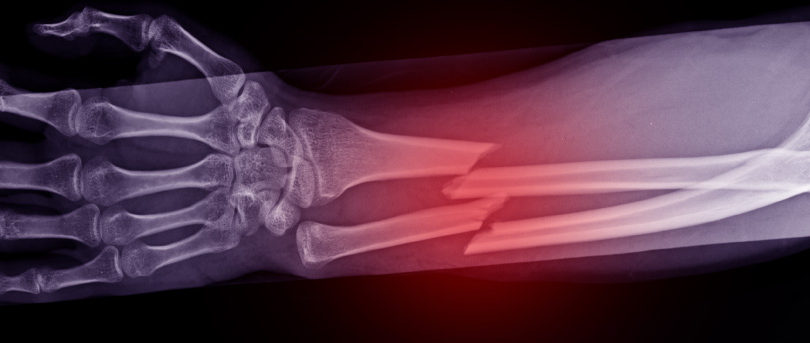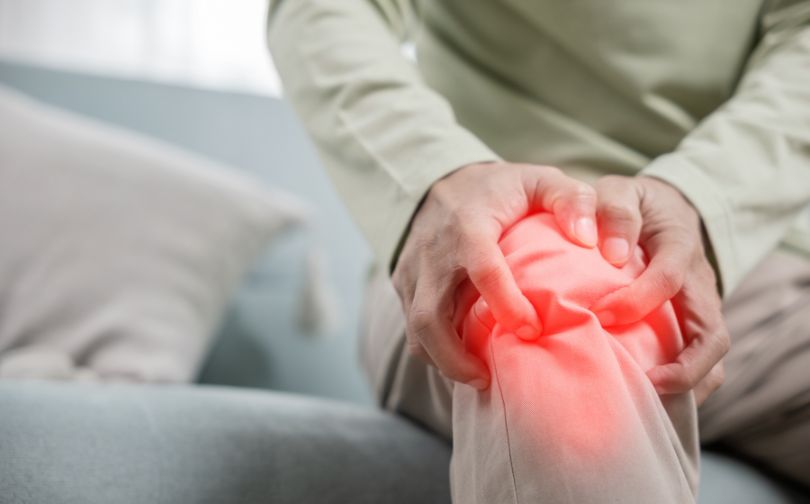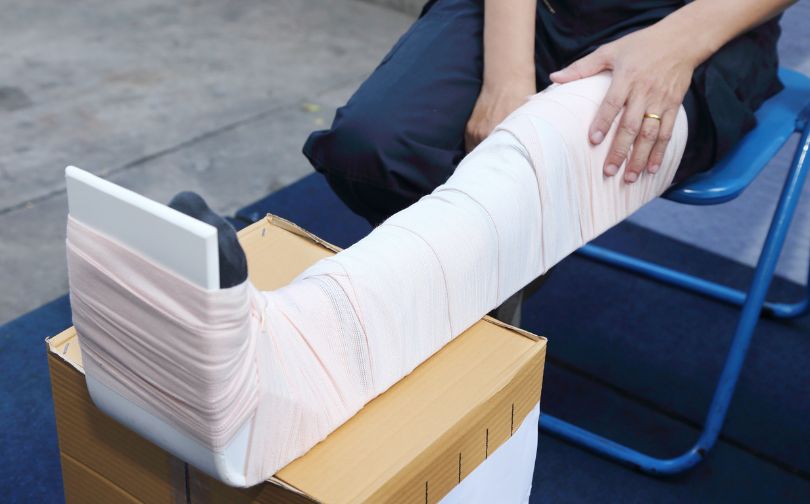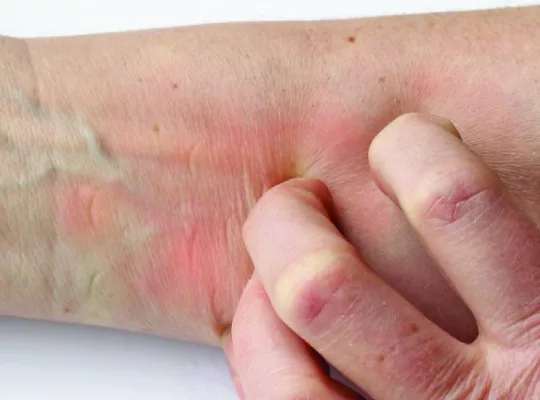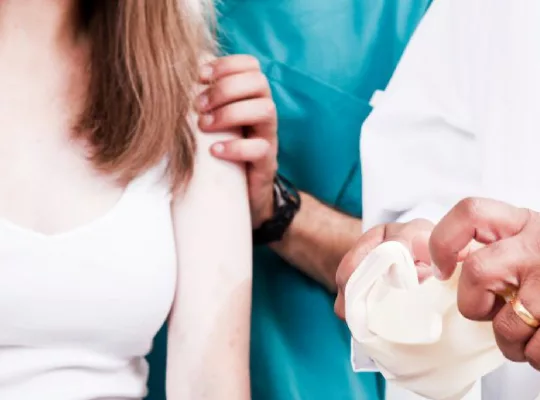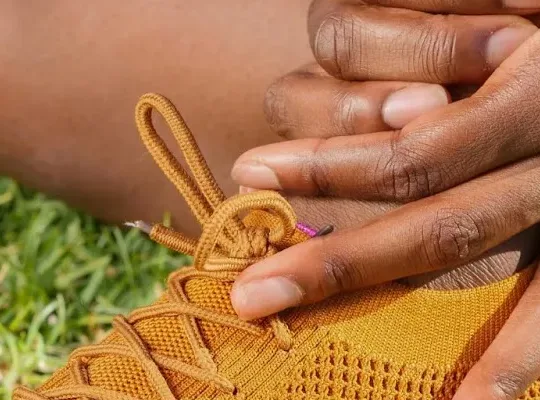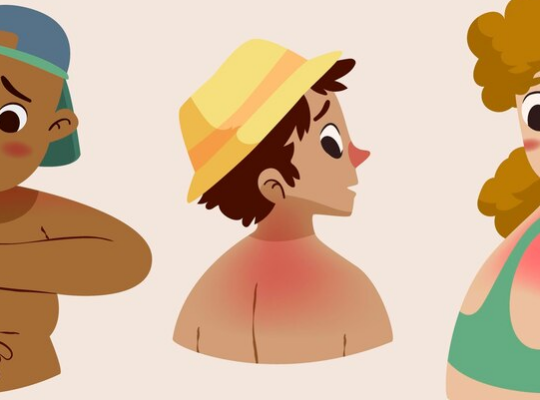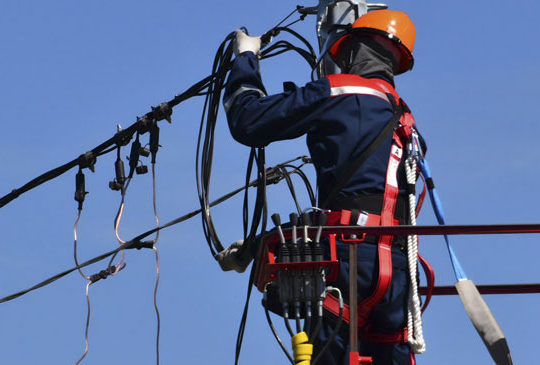Injuries like broken bones and fractures can strike unexpectedly, whether during a sports game, a fall, or an accident. The pain and shock of such an injury can be overwhelming, especially when you’re unsure of what to do next. Without the right knowledge, trying to move or support the affected area might worsen the injury or lead to complications.
Nearly 6.3 million fractures occur each year in the United States alone, affecting both adults and children. Knowing how to respond promptly can help reduce pain, prevent further damage, and improve recovery outcomes.
In this guide, you’ll find clear, step-by-step instructions for providing first aid in the critical moments following a break or fracture. Whether you’re helping someone else or facing an injury yourself, these essential tips will help you act with confidence and care.
What Are Broken Bones?
Broken bones, also known as fractures, occur when a bone experiences a force that exceeds its strength. These fractures can happen due to various reasons, including falls, accidents, or sports injuries.
There are different types of fractures, such as simple fractures, where the bone breaks but does not pierce the skin, and compound fractures, where the bone breaks and protrudes through the skin.
What Are the Symptoms of Broken Bones?
Here are the symptoms of broken bones:
- Pain: Individuals often experience sharp, severe pain at the site of the injury, which may worsen with movement or pressure.
- Swelling: The area around the broken bone may swell due to inflammation and fluid buildup, which can lead to bruising as well.
- Deformity: A visible change in the shape of the affected limb or joint can indicate a fracture, where the bone may appear out of alignment.
- Loss of Function: Difficulty moving the injured area or inability to bear weight can occur, limiting normal activities.
- Tenderness: The injured site may feel sensitive to touch, leading to discomfort when pressure is applied.
- Crepitus: A grating sensation or sound can arise when the broken ends of the bone rub together during movement.
What Should I Do As a First-Aid Care For Broken Bones & Fractures?
If you or someone around you needs to apply first aid for a broken bone or fracture, call 911 as soon as possible. Then, or while the call is being made, follow these steps:
- Stop any bleeding with a combine pad, gauze, or any clean cloth or towel
- Use a splint to immobilize the injured limb. If you don’t have a splint on hand, you can make one. If it’s a break in the wrist or arm you can also put the arm in a sling to prevent movement.
- If it is an open fracture and the bone is visible, do not try and move the bone back under the skin. Similarly, if there is a dislocation do not attempt to relocate the bone unless properly trained.
- If available, use a cold pack or ice wrapped in a towel to help numb the pain.
- Check for signs of shock, and if necessary, treat it.
- Wait for help to arrive.
How Do I Make a Splint?
The most important item for a broken bone or fracture is a splint. Immobilizing the broken bone prevents further damage and allows the bone to heal faster You can make a splint out of rolled-up newspaper, a rolled-up towel, a strong stick or rod, or a plank of wood as long as the material is strong enough to keep the limb from moving. If the stick or plank of wood could give the person splinters, wrap it in cloth. Next tie the splint to the limb and make sure it is secure but not cutting off circulation. Shoelaces, belts, ropes, string, and medical take are all good options.
What Are the Signs of Shock?
- Cool and clammy skin
- Flushed face or skin
- A blue or gray hue in the fingernails or lips
- Rapid pulse and or breathing
- Weakness or fatigue
- Nausea or vomiting
- Enlarged pupils
- Dizziness or fainting
- Changes in behavior, usually anxiety or agitation
How Do I Apply First Aid for Shock?
- Lay the person down, and unless they have injured their leg(s), elevate their feet and legs a bit by using a rolled-up sleeping bag, a backpack, airpack for medical supplies etc.
- Try to keep the person as still as possible, only moving them when help arrives, or they are in danger.
- Loosen restrictive clothing.
- Cover with a blanket if they, or the surrounding area is cold.
- If they are having an allergic reaction, use an epi-pen if they have one.
- If they are bleeding, apply pressure to the wound with a towel or gauze.
- If they did not suffer a spinal injury and are in danger of choking, turn their head to the side.
Types of Fractures
- Closed Fracture – the bone is fractured but has not broken the skin.
- Open Fracture – the bone has broken the skin. This type of fracture requires immediate medical attention.
- Displaced Fracture – the bone breaks into two or more pieces and moves out of alignment.
- Non-displaced Fracture – the bone breaks but doesn’t move out of alignment.
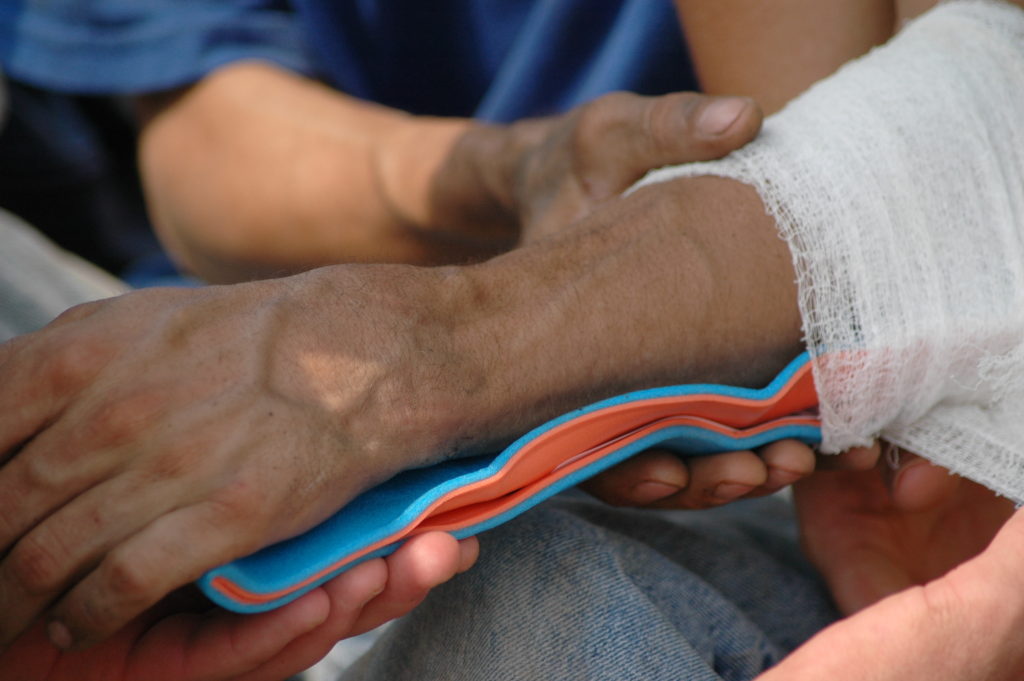
Don’t Let Fractures Keep You Down
Accidents happen, be prepared for any injury so you can get back to life as quickly as possible. Having first aid supplies and knowledge of first aid for a broken bone or fracture can help give your body a head-start on healing and prevent injuries from becoming worse.
Conclusion
Understanding how to respond to broken bones and fractures can make a significant difference in recovery. Knowing the different types of fractures—like closed, open, displaced, and non-displaced—helps in recognizing the severity of the injury.
Key symptoms to watch for include pain, swelling, deformity, and loss of function. Prompt first-aid steps, such as controlling bleeding, immobilizing the injured area with a splint, and monitoring for shock, are essential for stabilizing the situation until professional help arrives.
Having basic first-aid supplies on hand, including gauze, splints, and ice packs, ensures you can act quickly in emergencies. Preparedness and early care play a crucial role in preventing further damage and supporting the healing process.
FAQs
How Can You Identify A Broken Bone?
A broken bone often presents with intense pain, swelling, bruising, or visible deformity. In some cases, a bone may protrude through the skin, indicating a more severe fracture. Additionally, patients may hear a “snap” sound at the moment of injury, which can signal a fracture.
Should You Attempt To Realign A Broken Bone?
No, you should never attempt to realign or move a broken bone. Doing so can exacerbate the injury, potentially leading to more damage. It’s crucial to seek immediate medical assistance, as trained professionals have the expertise to properly assess and treat fractures without causing further harm.
What Materials Can Be Used For A Temporary Splint?
For a temporary splint, you can use materials like cardboard, small wooden boards, or even folded newspapers. Secure these makeshift splints with an elastic bandage to stabilize the injured area. This will provide essential support until professional medical help can be obtained for proper treatment.
How Can Pain From A Fracture Be Managed Before Medical Help Arrives?
To manage pain from a fracture before medical assistance arrives, apply an ice pack wrapped in a cloth to the injured area. Keep the limb supported and as still as possible to alleviate discomfort and prevent further injury. This method can significantly reduce swelling and pain.

